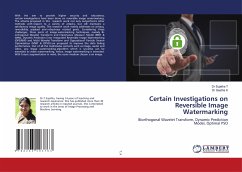Digital Watermarking has its place in security. It is not intended to replace cryptography but supplement it. Hiding a message with watermarking methods reduces the chance of a message being detected. However, if that message is also encrypted, if discovered, it must also be cracked (yet another layer of protection).Fragile watermarking is the embedding of a signal (the watermark) into an image so that modifications to the resulting marked image can be detected with high probability. A fragile marking system is useful in a variety of image authentication applications. By the amount of free and commercial tools available today, one can deduce that the use of steganography is growing. The interest in data hiding has risen with the recent activity in digital copyright protection schemes. One way to protect the ownership of a digital image is to secretly embed data in the content of the image identifying the owner.







